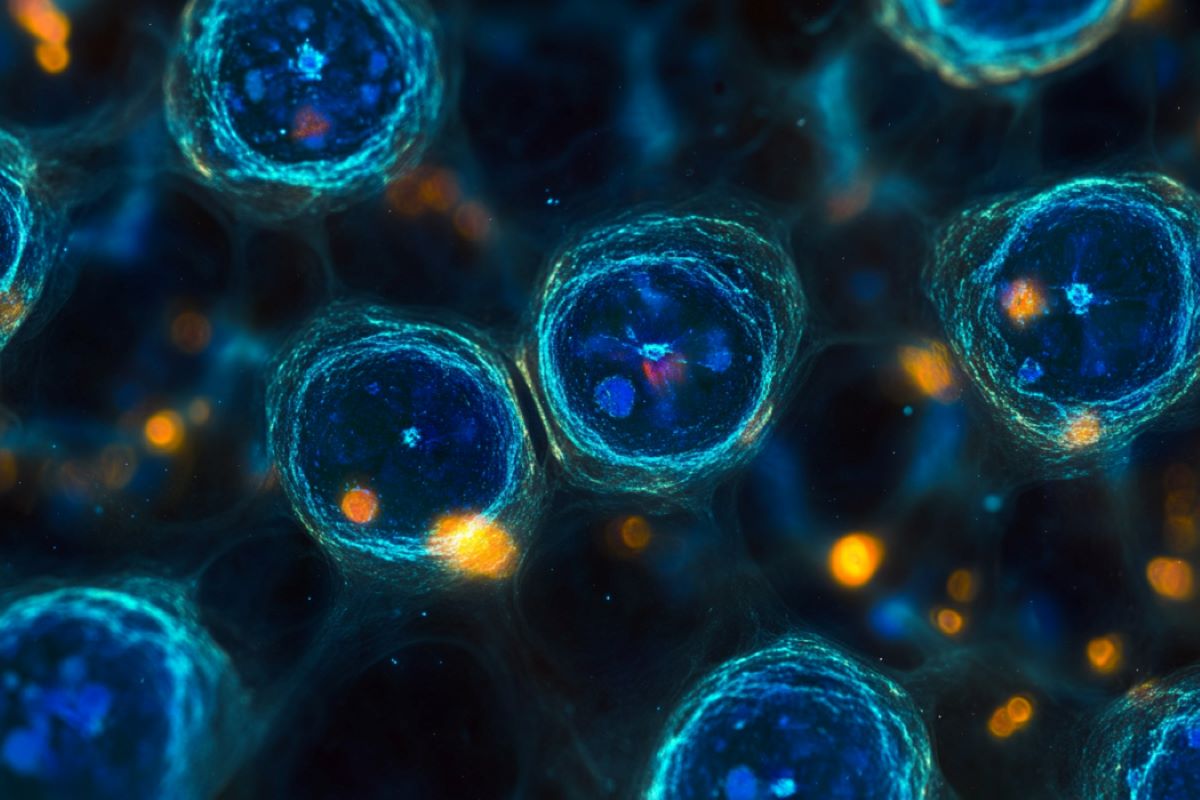Summary: Scientists identified key changes in chromosome structure and gene expression that contribute to stem cell exhaustion during aging. Using fruit flies, they discovered that blocking the gene ced-6 led to stem cell depletion, even in young organisms.
This finding uncovers a previously unknown mechanism of stem cell exhaustion, independent of over-proliferation. The research enhances our understanding of how aging impacts tissue repair and could inform future studies on human aging.
Key Facts:
- Blocking the gene ced-6 leads to stem cell exhaustion at any age.
- Stem cell exhaustion prevents tissue repair, contributing to aging.
- Findings in fruit flies may inform human stem cell aging research.
Source: RIKEN
Scientists from the RIKEN Center for Biosystems Dynamics Research (BDR) have identified key changes to both chromosome structure and gene expression that affect stem cell function during aging. Using fruit flies, they found that these changes led to stem cell exhaustion, which prevents stem cells from multiplying.
The findings, published in iScience on September 9, provide the first evidence of an independent exhaustion signal and enhance our understanding of how the delicate balance between stem cell exhaustion and proliferation is disrupted in normal aging.

When organs like the kidneys or intestines are damaged, the stem cells within them multiply and transform into the specific parts of the organ that need replacement. As animals — including humans — age, this process can malfunction.
Sometimes, the stem cells may continue to divide uncontrollably, resulting in excessive numbers that can lead to cancer. In other cases, they can become depleted and lose their ability to divide, preventing any tissue repair. This condition is referred to as stem cell exhaustion.
In humans, while stem cell proliferation at the molecular level is relatively well-understood, exhaustion remains largely a mystery. Previously, Sa Kan Yoo at RIKEN BDR identified how intestinal stem cells of fruit flies become cancerous as they age.
By using the same experimental system, in the new study, the team tested their theory that a proliferation-independent mechanism for stem cell exhaustion also exists.
They analyzed the chromatin structure in fruit fly intestinal stem cells and found a region of chromatin that often closed up during aging, preventing the regulator encoded by this region of DNA from being made.
Because ced-6 is a gene whose expression is normally controlled by this regulator, they next evaluated ced-6 expression using RNA sequencing. As expected, they found that ced-6 expression decreased with aging.
To determine whether there is a relationship between this gene and stem cell exhaustion, they next blocked its expression. This intervention effectively halted age-related stem cell proliferation, indicating that normally these genes work to prevent stem cell exhaustion.
They also discovered that bocking ced-6 could trigger stem cell exhaustion at any age. When intestinal cells are damaged, the stem cells normally proliferate, differentiate, and relace the damaged tissue. However, when the researchers intentionally damaged intestinal cells and blocked ced-6, they did not see any stem cell proliferation.
This indicates that the exhaustion caused by blocking ced-6, or other genes controlled by the same regulator, is not limited to times of advanced age, but is likely a general process that could be active any time to help maintain balance when proliferation is too high.
“Our findings will lead to new advances in aging research,” says Yoo.
“Understanding the mechanisms of stem cell exhaustion in fruit flies provides valuable insights into the aging process more broadly and could offer clues about how aging impacts stem cells in humans. The next step is to determine if similar changes occur in human stem cells as they age.”
About this genetics and aging research news
Author: Masataka Sasabe
Source: RIKEN
Contact: Masataka Sasabe – RIKEN
Image: The image is credited to Neuroscience News
Original Research: Open access.
“Insidious chromatin change with a propensity to exhaust intestinal stem cells during aging” by Sa Kan Yoo et al. iScience
Abstract
Insidious chromatin change with a propensity to exhaust intestinal stem cells during aging
During aging, tissue stem cells can demonstrate two opposing phenotypes of tissue homeostasis disruption: proliferation and exhaustion. Stem cells can exhaust as a result of excessive cell proliferation or independently of cell proliferation.
There are many silent changes in chromatin structures and gene expression that are not necessarily reflected in manifested phenotypes during aging.
Here through analyses of chromatin accessibility and gene expression in intestinal progenitor cells during aging, we discovered changes of chromatin accessibility and gene expression that have a propensity to exhaust intestinal stem cells (ISCs).
During aging, Trithorax-like (Trl) target genes, ced-6 and ci, close their chromatin structures and decrease their expression in intestinal progenitor cells. Inhibition of Trl, ced-6, or ci exhausts ISCs.
This study provides new insight into changes of chromatin accessibility and gene expression that have a potential to exhaust ISCs during aging.






